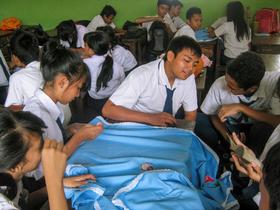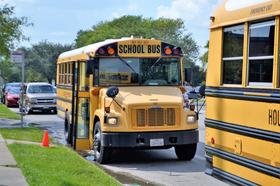Introduction
In 2025, public schools face unprecedented challenges, including post-pandemic learning recovery, rising mental-health concerns and equity gaps. Support services in public schools—such as tutoring, counselling and comprehensive student-assistance programs—are more critical than ever. This article examines the role of support services in public schools, outlines best practices and offers guidance for parents, educators and students seeking to understand how these supports help achieve stronger outcomes.
1. Defining Support Services in Public Schools
Support services in public schools typically refer to three core domains: academic support (tutoring and supplemental instruction), personal-social/emotional support (counselling, wellness programmes) and wrap-around or whole-child services (mentoring, family engagement and community partnerships).
Tutoring and academic intervention services help students who are behind or need enrichment.
Counselling and wellness services address mental-health, behavioural or adjustment issues.
Wrap-around supports linking students with mentoring, family outreach or external agencies.
For many school districts, these support services act together to help students remain engaged, thrive academically and develop resilience.
2. Why Support Services Matter in Public Schools
2.1 Addressing Learning Loss and Academic Gaps
The interruption of schooling caused by COVID-19 and other disruptions has increased demand for high-quality tutoring and academic support. Studies show that targeted tutoring and supplemental instruction are effective means of helping students catch up. For example, a study emphasised the benefits of one-on-one tutoring for children with special educational needs.
2.2 Supporting Mental Health and Emotional Well-being
Counselling and wellness services are now recognised as vital components of school support. Recent research found that school-based counselling improves student mood, coping skills and overall resilience. BACP
2.3 Fostering Equity and Access
Support services help level the playing field for students who face socioeconomic disadvantages, learning disabilities or other barriers. A blog on student support services highlights how academic advising, tutoring and emotional support contribute to retention and academic success.
2.4 Engaging Families and Communities
Wrap-around supports build stronger home-school partnerships and link students to community resources, thus extending the reach of school support beyond the classroom.
3. Key Support Services in Practice
Here are the main types of support services you’ll encounter in public schools, with how they function, evidence of impact and best-practice tips.
| Service | What it involves | Key benefits | Parent/Student tip |
|---|---|---|---|
| Tutoring / Academic Intervention | One-on-one or small-group tutoring sessions, homework help, summer programmes, study skills workshops | Accelerated skill recovery, improved grades, targeted support for learning gaps | Ask: How many sessions? What subjects? Is progress tracked and communicated? |
| Counselling / Wellness Services | School-based counsellors, mental-health screenings, small-group therapy, teacher check-ins | Improved emotional regulation, reduced absenteeism, enhanced student wellbeing | Inquire: What is the ratio of counsellor to students? How is confidentiality managed? |
| Student Support Teams / Wrap-around Services | Teams composed of teachers, social workers, behavioural specialists; family workshops; mentoring programmes (Taylor & Francis Online) | Holistic support for at-risk students, improved school climate, stronger home-school links | Consider: Is there a case-management model? How do referrals work? |
4. 2025 Trends and Innovations in Public School Support Services
4.1 Scaling High-Dosage Tutoring
A recent predictive modelling study estimated that U.S. school districts are investing thousands of dollars annually in high-dosage tutoring to address learning loss.
4.2 Integrated Counselling Models
New research emphasises the integration of counsellors into the school pastoral team rather than isolated service models.
4.3 Student-Centred Access and Help-Seeking
Studies highlight how adolescents’ perceptions of help-seeking (barriers and facilitators) must be addressed to maximise utilisation of counselling services.
4.4 Technology-Enhanced Support Services
While not yet dominant in all settings, digital supports (e.g., online tutoring platforms, virtual counselling rooms) are gaining traction, particularly post-pandemic.
4.5 Resource Constraints and Equity Gaps
Despite growth in support services, many public schools face staffing and funding shortages, which can limit access and quality of support.
5. Implementing Effective Support Services in Public Schools
5.1 Strong Leadership and Vision
School leaders must articulate a clear vision for student support, allocate resources strategically and ensure alignment with learning goals.
5.2>Use early assessment data (academic, behavioural, attendance) to identify students in need and monitor progress. Support services function best when they are responsive and targeted.
5.3 Qualified Personnel
Ensure tutors, counsellors and support-team members have appropriate training, supervision and the capacity to collaborate with classroom teachers.
5.4 Collaborative Approach
Support services should not operate in silos. Tutoring, counselling and wrap-around services work best when integrated with curriculum, classroom instruction and family engagement.
5.5 Monitoring and Accountability
Track metrics—attendance, grades, referrals, student surveys—to evaluate the impact of support services and refine programmes.
5.6 Equity Focus
Allocate additional support to students who face systemic disadvantages (e.g., low-income, English-language learners, special education).
5.7 Family and Community Engagement
Engaging parents and caregivers ensures support extends beyond school walls. Partnerships with community organizations strengthen service delivery.
6. Guidance for Parents and Students
Ask about service availability: What tutoring and counselling options does your child’s school offer?
Clarify how students are referred: Who makes the decision and how are needs identified?
Understand the schedule and format: When, where and how do tutoring or counselling sessions take place?
Engage with feedback loops: Are you informed of progress? Are there regular reports or meetings?
Encourage student-agency: Older students can participate in choosing support services and set personal goals for improvement.
Ensure confidentiality and trust: Particularly with counselling services, trust and a safe environment are key to student engagement.
Check for wrap-around supports: Are there mentoring, family-outreach or community-partner programmes in place?
Advocate if needed: If support services are limited or not working well, consider discussing enhancements with school leadership, parent-teacher association or district office.
7. Challenges and Considerations
Funding and staffing constraints: Many public schools operate under budget pressures that limit the scale of tutoring and counselling programmes.
Variation in quality: Not all services are equally effective; program design, personnel and context matter.
Student engagement and stigma: Some students may resist or avoid services due to stigma or lack of awareness; schools must actively promote trust and uptake.
Coordination across services: Without strong coordination, students may receive fragmented rather than cohesive support.
Equity gaps: Schools in disadvantaged communities may struggle to provide the same level of services as more resourced schools.
Sustainability: Programs initiated after crises (for example pandemic-recovery tutoring) may face funding lapses or shifting priorities. For example, some U.S. districts recently faced abrupt changes in funding for tutoring and counselling services. Times Union
8. Conclusion
Support services in public schools—tutoring, counselling, wrap-around supports—are indispensable to student success in 2025 and beyond. When well-implemented, they enhance academic performance, emotional wellbeing and educational equity. For parents, students and educators alike, understanding how these services work, how to access them and how to advocate for quality and equity is key. As districts continue to respond to evolving student needs, the role of support services will only grow in importance. By working together—school leadership, educators, families and community partners—public schools can foster environments where every student receives the support they need to thrive.















